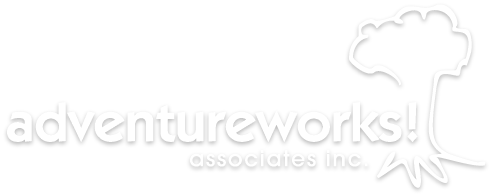Facilitating Virtually. The Same... But Different
/While we all continue to do our part to keep safe and limit the spread of Covid-19, we are spending a large portion of our time online. As facilitators we are still connecting with people, it just looks a little different. Facilitating virtually has required us to shift our thinking as facilitators as it is different than in-person sessions. However, there are similarities. The following are 10 things that I have found to be similar when facilitating virtual and in-person sessions.
Energy
Groups feed off, and often mirror positive energy. During an in-person session energy can be displayed and felt through body language as well verbally. In a virtual session body language is harder to read, (impossible if screen is off) so it is important to be energetic and positive in the tone of voice. Energy can be felt and heard through a screen. Whether it is virtual or in-person, giving energy can be draining so take time to re-charge.
Setting the Tone
How a session starts is important. The information provided in the beginning and the tone with which it is delivered will set the stage, and expectations, for what is to come, and groups often respond accordingly.
Begin with Making Connections
Starting a session by having participants connect, or re-connect, with each other through activities makes a big difference. As human beings we have a need to connect with others. Taking time to do this allows the rest of the session to flow better. Connection before content.
Community Matters
Groups who have developed as healthy communities often function better as they trust, respect, and celebrate each other. Heathy communities often have a meeting structure they have developed that allows them to communicate effectively and be productive. It can be easier to facilitate sessions with healthy communities and sometimes building a healthy community is the session.
Flow of the Session
If a session or activity has a great beginning, middle, and ending it can lead to optimal learning. Layering or scaffolding the learning outcomes in a session can help participants learn experientially. A session that flows well often seems timeless it is often over before you know it.
Silence
You ask a question and…silence. No one answers, at least not right away. It could be that people need time to think, the question might not be the right one, or there is nothing to be said. In a virtual session it is also a possibility that participants are muted, have poor connectivity, or have lost their internet connection altogether. Being patient and comfortable with silence can be a gift.
Shifting in the Moment
Sometimes things do not go quite as expected. Perhaps an activity “flopped,” the technology failed to function properly, or maybe the group just needs to do something different from what you had planned. Being able to identify when a shift is needed and being flexible to do so can lead to a great session.
Learning Breaks
Learning can be tiresome. Staring at a screen can be exhausting. Incorporating learning breaks is important for facilitators and participants to stay fresh and engaged.
Props
Whether it is a Thumball, UBUNTU Cards, or a foam item, a prop can be a fun way to prompt thoughtful reflection and learning. In a virtual environment having participants find their own items to share or using one of the many creative apps can have a similar outcome.
FUNN (Functional Understanding Not Necessary-Rohnke)
Adding a splash of FUNN to all sessions is always important, particularly given the current state of the world.
This is by no means an exhaustive list and you can likely make your own list of similarities. While many of us would much rather facilitate sessions in-person, facilitating in a virtual environment can provide similar opportunities for positive learning to occur. We often do not need to change too much about our facilitation fundamentals to be effective, we might just need an adjustment here and there. I often find it helpful to remember that in a session whatever happens is the only thing that could have possibly happen.

